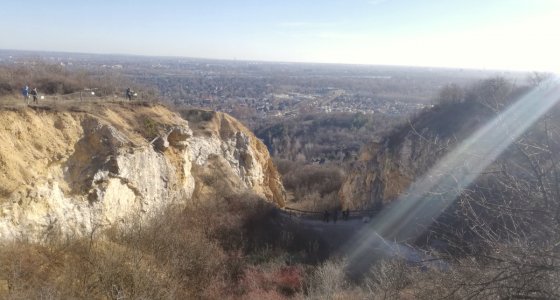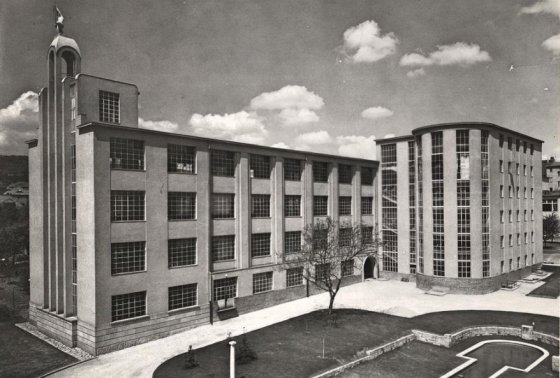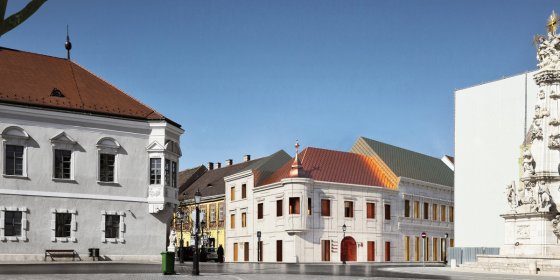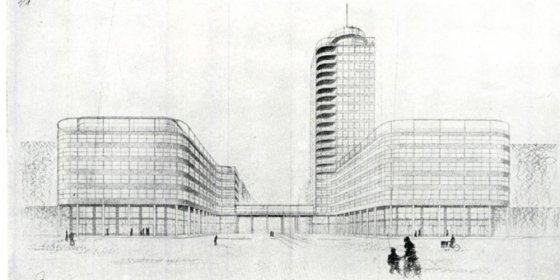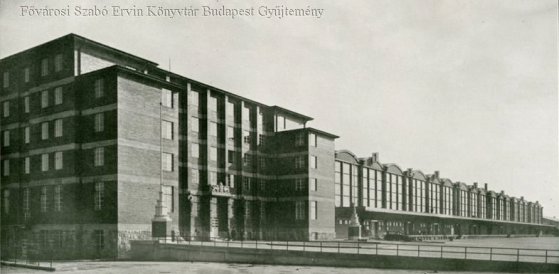 The „intertwined history” of the bridges and the city of Budapest
Which ideas and events have shaped the fate of bridges of Budapest and the cityscape? Alongside many other interesting facts, this question is also answered this newly published book by the Budapest City Archives, which introduces the history of bridges in Budapest.
The „intertwined history” of the bridges and the city of Budapest
Which ideas and events have shaped the fate of bridges of Budapest and the cityscape? Alongside many other interesting facts, this question is also answered this newly published book by the Budapest City Archives, which introduces the history of bridges in Budapest.
PestBuda
 The Capital City Zoo and Botanical Garden is at the forefront of European zoos
The Capital City Zoo and Botanical Garden is at the forefront of European zoos
January 27, 2022 at 9:00 AM
Of the 126 leading zoos in Europe, the Capital City Zoo and Botanical Garden is ranked 15th on the unofficial ranking of European zoos, the so-called Sheridan list. The list is determined by the evaluation of the visitor experience, the services and the professional work going on in the garden.
Two Faces of a Building - The Heinrich Courtyard in Józsefváros
January 26, 2022 at 10:30 AM
On the opposite side of Üllői Road, opposite the Museum of Applied Arts, stands a neo-baroque tenement house, built by the iron merchant Ferenc Heinrich. Not far from it, and in the neighbouring Mária Street, lies the long facade of an Art Nouveau warehouse. One would not even think that the two had anything to do with each other, however, both were built by the Heinrich iron merchant family. The latter was completed by 1912, meaning it could begin to be filled with goods a hundred and ten years ago.
Buses appeared on the Outer Ring Road ninety years ago - the public could travel for free on the first one
January 25, 2022 at 9:00 AM
The tram has belonged to the scenery of the outer ring road for almost a quarter of a century now. Traffic on the ring road is unthinkable without it, but there was a time when trams were not enough, so from 1932, for 57 years, buses also ran on the Outer Ring Road. They started on 25 January, 1932, just 90 years ago.
The renovated Bakát Square was handed over
January 24, 2022 at 7:00 PM
The renovation of the main square of Ferencváros, Bakáts square, has been completed. The development of the space was initiated in 2016 by the 9th district local council, and by 2018 the plans were born and the implementation was prepared by the experts on behalf of the local council Plants, benches, chess and mill tables and drinking wells were installed on the square formed in the 19th century.
Róka Hill, the capital's Grand Canyon
January 23, 2022 at 9:00 AM
While the statement in the title is, of course, a mere analogy, it is true that the sight of the mining cavities in Róka-hegy [Fox Hill] resembles the American giant valley system. However, most of the hill has been carried away or built up over time, so unfortunately it is not easy to meet a fox in the area. However, what’s left of the mountain and its surroundings after the bumpy past is definitely worth a trip.
The House of Hungarian Music has opened in City Park
January 22, 2022 at 7:00 PM
On the occasion of the National Day of Hungarian Culture, the House of Hungarian Music, completed within the framework of the Liget Budapest Project, was ceremoniously handed over in City Park. The new institution, which opened in a special building, awaits the public from 23 January 2022 with interesting music programs, an exciting and interactive permanent exhibition of music history, and a three-day program series next weekend.
The fate of the Kölcsey statue: the Romanians beheaded it, the people of Budapest recreated it
January 22, 2022 at 12:00 PM
The story of Ferenc Kölcsey's first statue in Budapest is very adventurous: the statue of the poet, which was inaugurated in Batthyány Square in 1939 and looked down from a low platform, was able to watch the passers-by from a much more worthy place decades ago. The original of the work in Budapest was inaugurated 125 years ago, hundreds of kilometers from its present location, in Nagykároly. In our article, on the occasion of the Hungarian Culture Day, we present the reasons why the work of art came from Transylvania to Budapest and why it was moved from its original place in Batthyány Square.
The Bottomless Lake: a romantic landscape in Újbuda
January 21, 2022 at 9:00 AM
One of the emblematic sites of Szentimreváros in the 11th District is the Bottomless Lake, which was artificially created in the late 19th century. The workers of the brick factory operating on the site of today's Kosztolányi Dezső Square accidentally cut through a deep watercourse, the stratum water burst to the surface and slowly filled the clay bed. The Bottomless Lake and its shores were neglected until the middle of the last century, where rubble and ruins were carried here during the two world wars. However, between 1958 and 1960, it was put in order and a park was established around it, and since then it has been a popular place for the citizens.
Where there used to be a barracks, there is now a sports hall - The history of the Franz Joseph infantry barracks
January 20, 2022 at 9:00 AM
Opposite Népliget stood a military object for more than a hundred years, the sight of which largely determined the intersection of Üllői Road and Könyves Kálmán Boulevard. Today it is replaced by a huge handball hall, which is currently hosting the first international sporting event. The history of the new building is still very short, but it offers a good opportunity to get to know the old one.
Once a world-famous factory in Budapest, now a hardly known company - The Hungarian Optical Works
January 19, 2022 at 10:00 AM
Just 100 years ago, in 1922, the Süss Nándor Institute of Precision Mechanics and Optics PLC was named after its founder. It was the plant which later became one of the largest and world-famous factory in Budapest. The factory, which has been operating under the name Hungarian Optical Works since 1939, once dominated the area around Csörsz Street, but today, only the name MOM, and the community centre reminds us to the former factory.
The forests of the Jegenye Valley and the Óbuda Island have been placed under protection
January 18, 2022 at 2:00 PM
Two valuable areas, the 2nd district Jegenye Valley and the gallery forest of Óbuda Island has recently been protected. The Jegenye Valley is dominated by the many salamanders that live there and the now almost completely extinct hornbeam-oak forest, but the clean water springs there are also a rare treasure. It is also a rarity, and the 2.5-kilometer-long gallery forest in Óbuda, which is close to nature, is also under special protection.
Városliget Bridge and Margit Island Water Tower - Budapest owes much to Szilárd Zielinski
January 18, 2022 at 9:00 AM
The first Hungarian doctor of engineering was appointed 120 years ago, on 17 January 1902. He was Szilárd Zielinski, who, in addition to writing his doctoral dissertation on a railway system under Budapest, was one of the pioneers of reinforced concrete construction and provided the city with a number of emblematic structures. Without him, the Margit Island Water Tower, the bridge named after him over Lake Városliget, but also the Chain Bridge would be different.
Palatine Joseph, who died 175 years ago, had been systematically developing Budapest for decades before the Public Works Council
January 15, 2022 at 3:30 PM
Palatine Joseph [József nádor in Hungarian] died 175 years ago in Buda. Although the archduke born in Florence was destined for a different career, he did much for Hungary, Pest and Buda from 1795 as a governor, then from 1796 as Palatine until his death in 1847. On the anniversary of his death, we put together a bouquet of what Budapest owes to him.
Endre Ady's former home in the city center has been renovated
January 15, 2022 at 9:30 AM
On 18 January, the renovated Ady Memorial Museum will open at 4-6 Veres Pálné Street, 5th District. The last home of Endre Ady, which today is a branch of the Petőfi Literary Museum as a memorial museum, awaits those interested with more friendly public spaces, a renewed exhibition, new museum pedagogical sessions and a series of programs.
The Tétény Plateau is cleared of construction and other waste
January 14, 2022 at 2:00 PM
The specialists of the Budapest public utility company debris and other debris from military buildings demolished decades ago are removed from the Tétény Plateau area. The plateau is returned to the native flora. The nature reserve is home to many species of protected plants and animals.
Nearly one hundred and eighty buildings would come under local protection in the capital, according to a draft
January 13, 2022 at 12:30 PM
According to a new draft, the Budapest local council would place mainly the residential houses built between 1945 and 1980, including residential houses in Budavár, two housing estates, two former party houses and a workers' hostel. The proposal for the Budapest General Assembly lists the buildings to be preserved in nine pages, the nearly 180-item list includes the Hilton Hotel in Budavár, the main building of the Southern Railway Station, and a number of modern buildings in several districts, including downtown after the war.
Water intrusion into the metro tunnel: the builders feared that the houses on Rákóczi Road would be endangered
January 11, 2022 at 1:00 PM
Between Astoria and Blaha Lujza Square, in the metro tunnel under construction, but on the already drilled section, a water intrusion took place in 1967, which shocked the people of Budapest and raised questions about the possible safety of the metro. The unexpected sand and water intrusion 55 years ago not only caused alarm among prospective passengers, but also experts feared that the residential buildings on Rákóczi Road could be endangered. After averting the danger, the builders tried to reassure the people of the capital that there would be no need to fear similar accidents in the finished metro tunnel.
A promenade is being built on the banks of the Danube in Kelenföld
January 10, 2022 at 6:00 PM
In the southern section of Buda, a new pedestrian and leisure promenade with a width of 20-30 meters is expected to be built on the banks of the Danube in Kelenföld, recently a tender was announced for its design.
A building fitting the historical environment will be on Szentháromság Square in Budavár, says the designer
January 10, 2022 at 4:30 PM
A house, respecting the historical past, which closely matches the image of the Castle District and the UNESCO World Heritage Site, will be the new conference centre of the Pallas Athene Domus Meriti Foundation in Szentháromság Square, said Ádám Reisz, head of Rapa Architects, the designers of the building. He also explained that the starting point for the reconstruction of the facade was the pre-war state, as there is a wealth of visual information available about this age on which they could based it.
Skyscraper plans in Budapest - High-rise buildings were planned for Károly Boulevard, Astoria and Rákóczi Road
January 9, 2022 at 11:00 AM
On Pestbuda, we recently introduced the Mol Tower under construction, which will be the first real high-rise building in Budapest. It will be no real skyscraper, because we call that buildings with a height of up to 150 meters, and the Mol Tower, albeit just by a little, remains below that limit. High-rise buildings have been designed in Budapest for almost 100 years, and several architects would have surpassed the 96-meter-high height of the Parliament and St. Stephen's Basilica.
The 130-metre-high Tower of Hungarian History would have been built on the banks of the Danube in Pest
January 8, 2022 at 10:30 AM
The new headquarters of MOL will be completed later this year, and will be the first skyscraper in the capital. Together with the technical equipment placed on the roof, a 143-metre high-rise building will be constructed in Buda, in the Lágymányos District, but a building of a similar size was planned on the banks of the Danube in Pest between the world wars. In the plan of Jenő Lechner's Tower of Hungarian History, the everyday tasks of a tourist service centre and the sublime functions of a national pantheon appeared at the same time.
Planning for the Semmelweis University Knowledge Park in Józsefváros can begin
January 7, 2022 at 3:00 PM
The design of Semmelweis University's knowledge center called Science Park in Józsefváros may begin soon, as the winning design office was found through a tender. The Health and Biotechnology Science Park will play a key role in everyday healing and patient care, and will aim to increase Hungary's competitiveness in the healthcare and biotechnology industries.
Menyhért Lónyay, the first Minister of Finance following the compromise, was born two hundred years ago
January 7, 2022 at 12:00 PM
Born two hundred years ago, Menyhért Lónyay was a politician, publicist, and the first prime minister of Hungary after the compromise, and a commemoration was held in Budapest.
The skyscraper on the Kopaszi Dam will be completed soon
January 7, 2022 at 9:30 AM
The120-meter Mol headquarters is expected to be built this year on the Kopaszi Dam in the 11th district. The tallest building in Budapest will have not only offices, but also public spaces, so for example, anyone will be able to admire the view of Budapest from the lookout terrace planned on the roof of the tower house.
The past of Nagyvásártelep - The food trade centre of the capital was built ninety years ago
January 6, 2022 at 9:00 AM
When the Central Market Hall in Fővám Square was handed over in 1897, the leaders of the city believed that the process of food industry development and freight transport, which had been going on for decades at the time, had come to an end. Steam mills, slaughterhouses and meat plants were lined up along Soroksári Road, and the needs of retailers and wholesalers were fully met with the establishment of the Danube Coast Freight Station and the construction of public warehouses between the Southern Railway Link Bridge and Fővám Square. However, it soon became clear that this was far from the case, and there was an urgent need to ensure the daily flow of goods through a wholesale market.
Park development in Óbuda is nearing completion - Nearly 400 native trees have been planted
January 5, 2022 at 6:30 PM
The Táncsics Park in Békásmegyer was an unused area for decades, its development dates back to 2014, and the 3rd district local council won the EU support in 2018. The park, which will be completed this spring, will have comfortable rest areas, a modern playground, rich flora and a total of 432 new trees.
Cars were banned from the popular streets of the Downtown 45 years ago
January 5, 2022 at 11:00 AM
In Budapest, from the 1960s onwards, the narrow streets of the Downtown were completely occupied by cars and barely accessible to pedestrians. At first, cars were banned only from Váci Street, but 45 years ago, car traffic was stopped in several Downtown streets, and from then on, only pedestrians could use them.
There will be even more trees in Városmajor: the oldest public park in Buda will be renovated
January 4, 2022 at 6:30 PM
An open design competition for landscape renovation was announced for the renovation of the historic public park in Városmajor. During the investment, a greener, more orderly park will be created in the heart of Buda, in the 12th district. The green space of the park will be expanded, new trees will be planted, new clearings will be created, cars will be excluded, interior paths will be rethought, playgrounds will be renovated, older people will be given more quiet resting places and dog owners will have a place as well.
The Ferihegy Aviation Museum is thirty years old
January 4, 2022 at 3:30 PM
The Aeropark Aviation Museum in Ferihegy celebrates its 30th anniversary, presenting, among other things, the heroic age of aviation, the 66-year history of Malév and the everyday life of modern aviation. Visitors can also look beyond the everyday life of Liszt Ferenc International Airport and Debrecen International Airport.
The poet Ágnes Nemes Nagy was born in Budapest 100 years ago
January 3, 2022 at 7:30 PM
Ágnes Nemes Nagy, a poet, translator and essayist who was born a hundred years ago, writes masterpieces such as the poems of the book Wandering Years or the Solstice, or All Children's Poems. The poet was born in Budapest and died here in the 12th district 5/b Királyhágó street - where she lived for about thirty-three years.
More articles
 The „intertwined history” of the bridges and the city of Budapest
Which ideas and events have shaped the fate of bridges of Budapest and the cityscape? Alongside many other interesting facts, this question is also answered this newly published book by the Budapest City Archives, which introduces the history of bridges in Budapest.
The „intertwined history” of the bridges and the city of Budapest
Which ideas and events have shaped the fate of bridges of Budapest and the cityscape? Alongside many other interesting facts, this question is also answered this newly published book by the Budapest City Archives, which introduces the history of bridges in Budapest.
 The Bridge Report, which brought a turning point in the history of Budapest
A travel report that changed the history of Pest and Buda, as well as Hungary. The little book contributed to the change of half a thousand years of legal customs and the implementation of an investment of unprecedented size and technical quality. This book was The Bridge Report [Hídjelentés in Hungarian].
The Bridge Report, which brought a turning point in the history of Budapest
A travel report that changed the history of Pest and Buda, as well as Hungary. The little book contributed to the change of half a thousand years of legal customs and the implementation of an investment of unprecedented size and technical quality. This book was The Bridge Report [Hídjelentés in Hungarian].
 Drama on the university wall - The heroic monument was planned 95 years ago
In the constant hustle and bustle of the Egyetem Square in Pest, the students may not even notice the monument that decorates the short section of wall between the church and the central building of ELTE. However, it commemorates their predecessors, the heroes who fought for their country in World War I, and those who heroically helped them. The first design of the dramatically collapsing soldier was born in 1928, ninety-five years ago.
Drama on the university wall - The heroic monument was planned 95 years ago
In the constant hustle and bustle of the Egyetem Square in Pest, the students may not even notice the monument that decorates the short section of wall between the church and the central building of ELTE. However, it commemorates their predecessors, the heroes who fought for their country in World War I, and those who heroically helped them. The first design of the dramatically collapsing soldier was born in 1928, ninety-five years ago.




